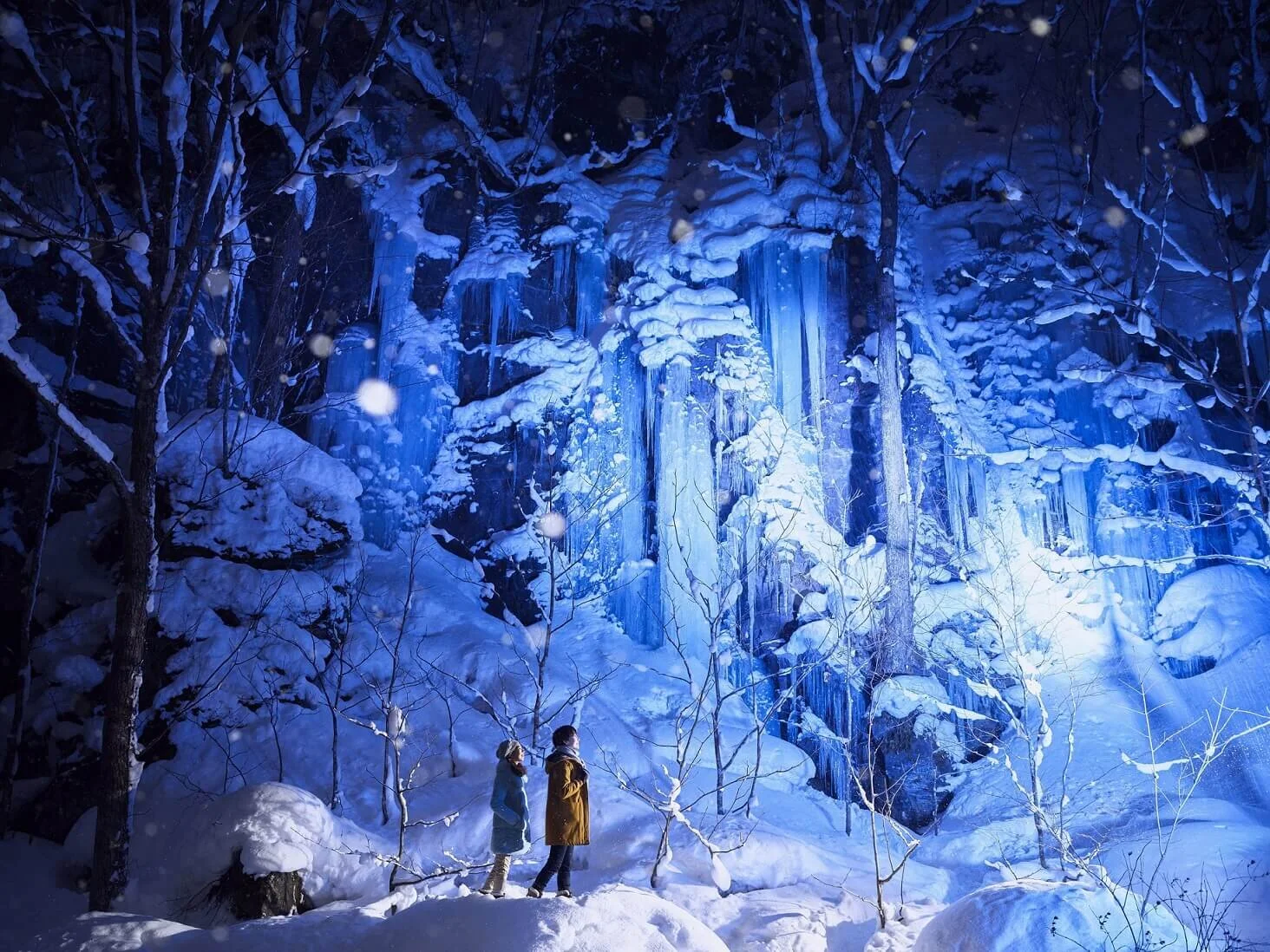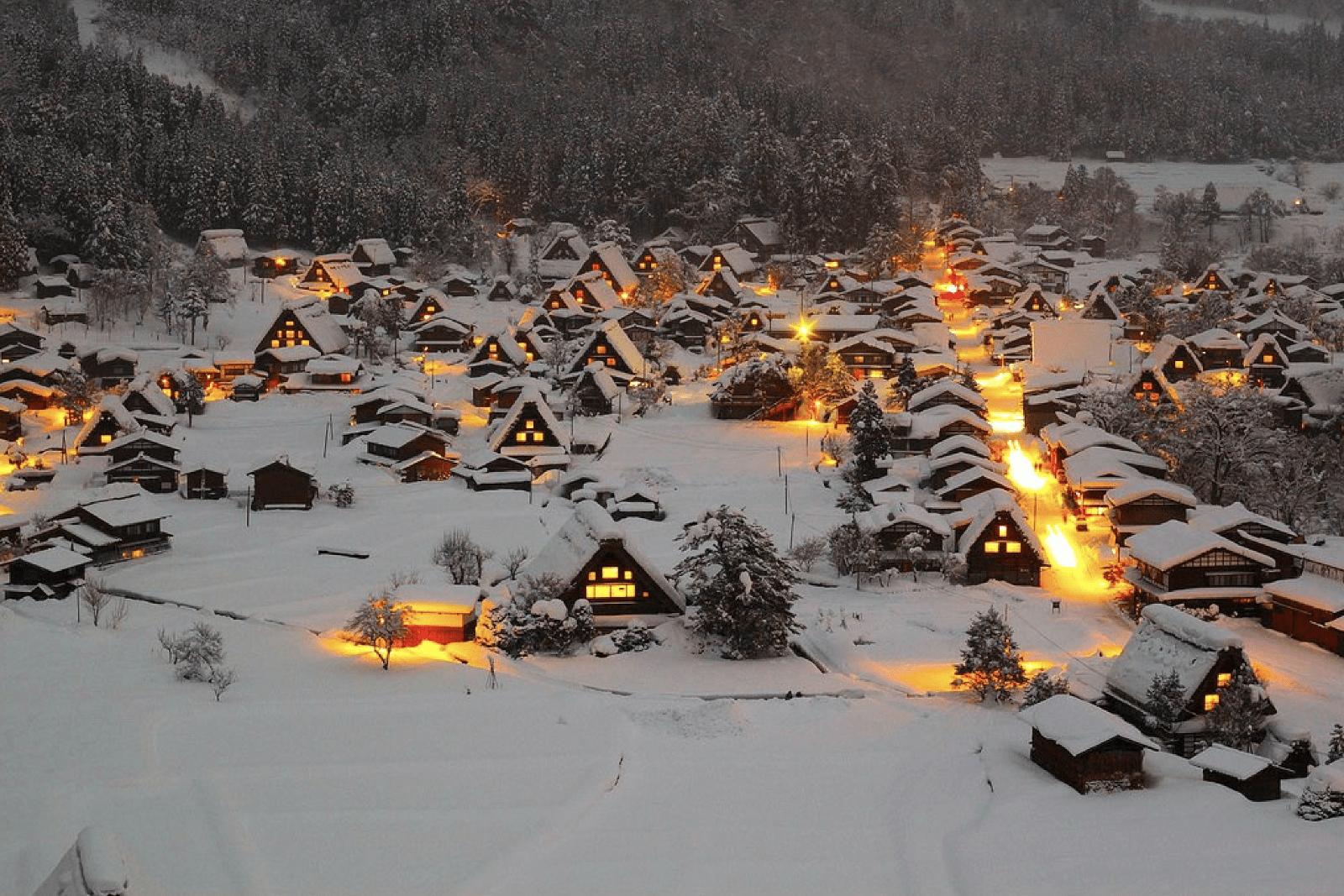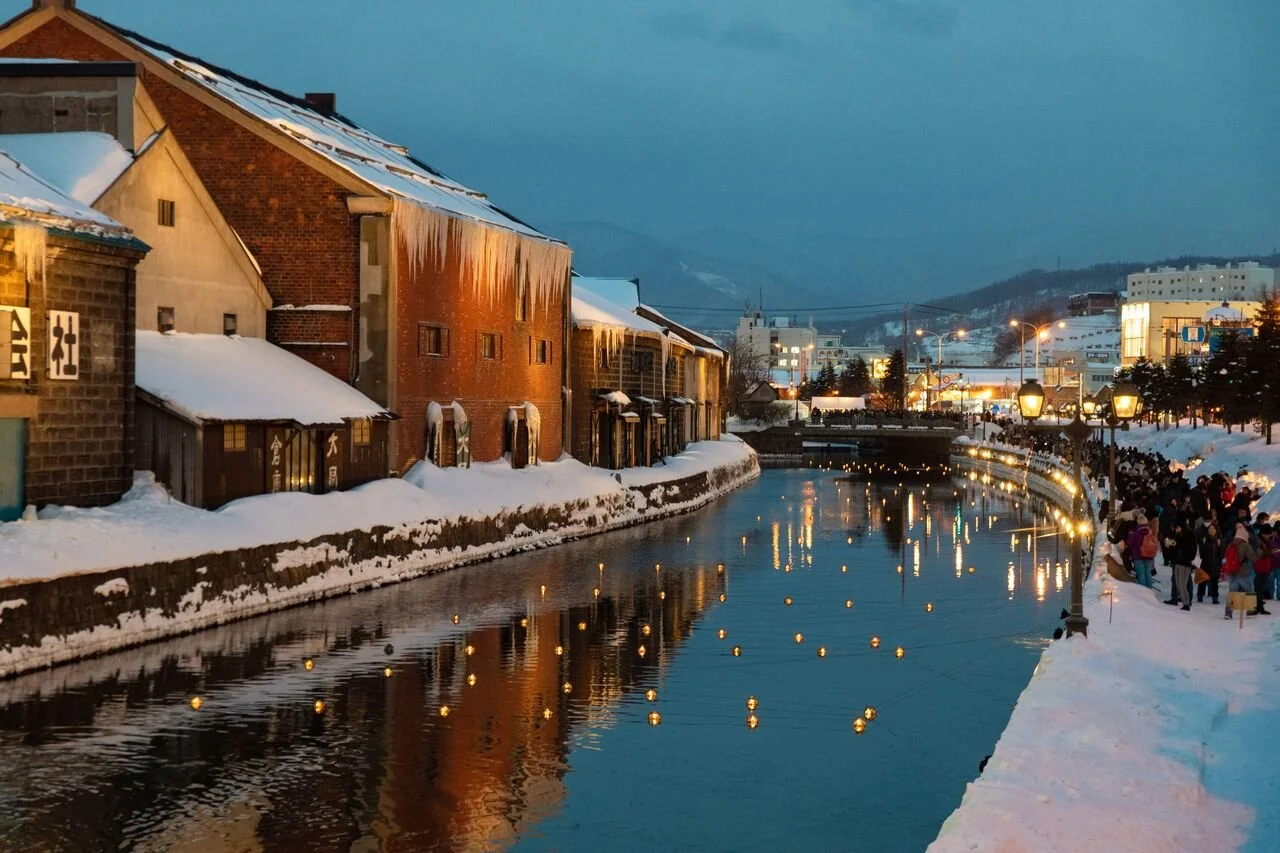Snowing in Japan - Top 5 spots to enjoy snow in Japan
Snow season in Japan begins in mid-to-late December, right before Christmas and through late March or early April with January being the coldest month - the temperature plummets to around 1°C (32°F).
From scenic mountain scapes to bustling snow festivals, I’ve sieved through the internet and bugged my Japanese colleague for recommendations so that you don’t have to. I present to you the top 5 snow watching spots!
*Disclaimer: This guide is according to an introvert with her heads in the clouds that prefers a slower paced travel style. Take it all in!
1. Aomori Prefecture 青森 - The Snowiest City in the World
Aomori Prefecture - Why visit any other city when you can head right to the snowiest city in the world? Talk about checking off bucket lists! This northern prefectural capital is pummelled by heavy blizzards and ice storms, making Aomori one of the snowiest major cities on the planet with an average of 8 metres of snowfall annually between November and April.
Hakkoda Snow Corridor
Source: Mitsuhiro Wada / Getty Images
The Hakkoda Snow Corridor is a driving route between the Hakkoda Hotel at Sukayu Onsen and Yachi Onsen that reopens on the 1st of April each year, a local signifier of the start of spring following the road’s winter closure.
The Hakkoda Walk
Source: Alpine Tour
A 3 days event, The Hakkoda Walk is an 8.1 km walk that usually happens before the reopening of the route. Participants get to experience walking in between the snow corridor that goes up to 10 metres high - awakening Hakkoda from its winter sleep.
Tip: During Spring in May, cherry trees begin to blossom in Aomori - the perfect time where you get the best of both worlds with the extra cherry on top (pun intended) of enjoying both the cherry blossom and the snow corridor!
Oirase Stream (奥入瀬渓流, Oirase Keiryū)
Source: Beautiful Japan
Oirase Stream - A picturesque mountain stream in Aomori Prefecture best known for its autumn foliage transforms into the perfect icy “snapshot” as its waterfall freezes mid-flow as if it’s frozen in time (see what i did there).
Source: Hoshino Resorts
“Frozen Waterfall Illumination Night Tour” - Check in the Hoshino Resorts Oirase Keiryu Hotel, the only resort hotel located right by the Oirase Gorge and join their night tour to marvel at illuminated frozen waterfalls and the tranquil snow-clad landscape straight out of a fantasy film.
I’m barely scratching the surface of this beautiful prefecture. Here’s a link for you for a more extensive overview of what you can expect in Aomori!
2. Shirakawago (白川郷, Shirakawagō) and Gokayama (五箇山) Villages, Gifu.
Japan has no shortage of charming mountain villages, and one of the best places to experience traditional rural Japan is deep in the Japanese Alps - Shirakawago and Gokayama Villages, Gifu.
Source: Japan Objects
Shirakawago and Gokayama Villages - Isolated from the world, this beautiful UNESCO World Heritage Site is surrounded by pine trees covered mountains along the picturesque Shokawa River (庄川, Shō-gawa).
Source: JW Web
Famed for their traditional Gassho-zukuri farmhouses, most of these farmhouses are built in the late 1800s.
Gassho-zukuri means "constructed like hands in prayer" - steep thatched roofs of these farmhouses resemble the hands of buddhist monks pressed together in prayer. Built without a single nail, these roofs are made to withstand the heavy annual snowfall in the Japanese Alps while the large attic space facilitates the cultivation of silkworms.
Tip: Round up your trip by spending a night in one of these farmhouses. Many of these houses have been converted into minshuku, offering an authentic and tranquil Japanese experience.
Waking up to firewood and hot cocoa while i watch fresh blankets of snow glisten as the sun rises? Empty my pockets, take all my money.
3. Otaru Snow Light Path Festival
Otaru Snow Light Path Festival (小樽雪あかりの路, Otaru Yuki Akari no Michi) is the iconic winter event that lights up the port city Otaru. This festival is usually held in the month of February for period of 10 days.
Otaru Canal
Source: Headout.com
Completed in the year 1923, the Otaru canal served as a major fishing and trade port with a water route for sea shipment to Hokkaido.
Soak in the quaint town's atmosphere as you take a walk surrounded by illuminated snow statues and Japanese food stands while basking in the scene of flickering illuminated glass balls on the canal reminiscent of old-fashioned fishing floats.
Source: Japan Airlines
Expect magical and whimsical displays of lanterns that line up pathways, shops and even residences by locals that fully embody the festive spirit - a winter spectacle that illuminates the northern city in the light of some 120,000 candles.
Tip: Take a day trip to Otaru from Sapporo city when you are in town for the popular Sapporo Snow Festival and change it up for a more intimate experience. Why settle for one snow festival experience when you can bag two?
4. Jigokudani Monkey Park (地獄谷野猿公苑, Jigokudani Yaen Kōen)
Part of the Joshinetsu Kogen National Park, Jigokudani Monkey Park is located in Yamanouchi, Nagano Prefecture, Japan that offers visitors the unique experience of seeing wild monkeys bathing in a natural hot spring. I wonder who first went like “Yeah i want to watch monkeys in hot springs!” - me, that would be me.
Jigokudani - Hell Valley
Source: Getting around Japan
To access the park, all visitors have to walk along a 30 minutes forest trail surrounded by coniferous cedar trees before arriving at the “Hell Valley”, also known as Jigokudani.
Source: Adventurous Kate
The Hell Valley, Jigokudani got it’s name from bearing resemblance to harsh hell-like conditions with steep cliffs and geothermal activities like steaming hot springs that bubbles out of small crevices in the frozen ground.
Japanese Macaques: Snow Monkeys
Source: Japan Airlines
The Japanese macaque, also known as the snow monkey, is a terrestrial Old World monkey species that is native to Japan. Fun fact: They are able to brave harsh winter temperatures up to as low as -15 °C.
Winter is the best season to visit the park as the snow monkeys are most likely to be bathing in the hot springs. There are over 160 snow monkeys at Jigokudani. Visitors can get close, but are prohibited from touching and feeding the monkeys.
Tip: Take a trip down to the hot spring town of Shibu Onsen with a history of 1300 years after your visit to the Jigokudani Monkey Park - only 20 minutes on foot and a lifetime of history to unfold!
5. Sea of Okhotsk (オホーツク海)
The Sea of Okhotsk (オホーツク海) - a marginal sea of the western Pacific Ocean bordered by Russia and Japan is the northern hemisphere's southernmost region to see drifting sea ice (流氷, Ryūhyō).
Drift Ice - (流氷, Ryūhyō)
A view of the sea from the town of Shari - Source: Hokkaido Sight Seeing
The drift ice originates from the north of Sakhalin, carried south by the northwestern winds and the East Sakhalin current that flows south along Sakhalin’s east coast before drifting through The Sea of Okhotsk to reach Hokkaido typically in mid January to early February before disappearing again around mid March to mid April. It ranges from 10cm to 1m thick!
Abashi Drift Ice Sightseeing
Source: Hanaoka Shungo
One of the best ways to catch a better glimpse of this icy phenomenon is by joining a sightseeing cruise that departs from the Abashiri Port - where the ice gets the thickest. Reimagine an “ice breaking” Titanic moment as the ship breaks through the ice and sails forward. Ahoy captain!
Adult prices start from ¥3,500.
Ice Hopping - Drift Ice Walking Tour
“See no touch, touch no see” does not apply here! Join thrilling drift ice walking tours to stride over the frozen sea. I can’t land my foot on the moon but i sure can land my feet on drift ice.
Observe fur friends living on and beneath the ice like seals and sea eagles native to Russia migrate from their breeding grounds to Japan. Should lady luck be on your side and the environment facilitates, you can even take a quick dip in the sea with protective dry swim suits!
Adult prices start from ¥5,000.
Now time to let my body get as cold as my ex’s heart, i am ready to be the girl in the middle of the picture all iced out. Do you want to build a snowman?
Enjoy reading bite-sized Japanese travel articles like this? Here are some reads you might like!














